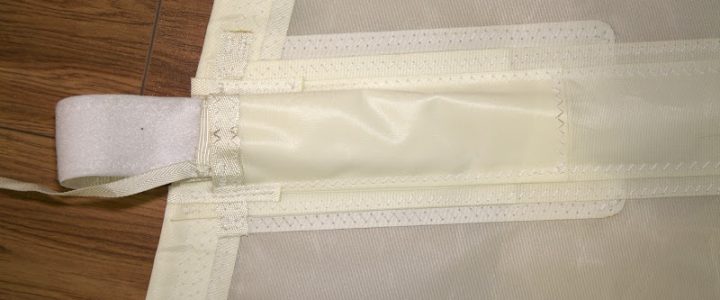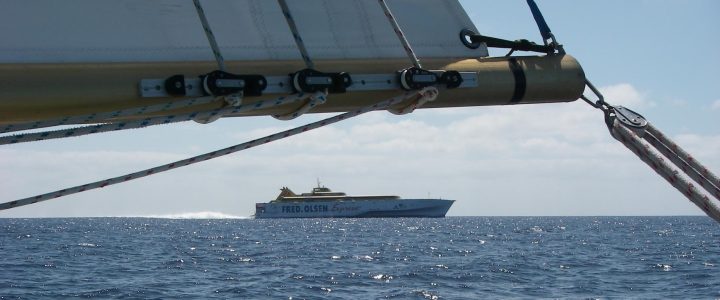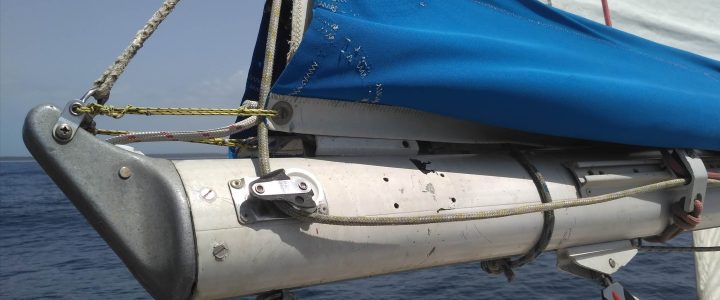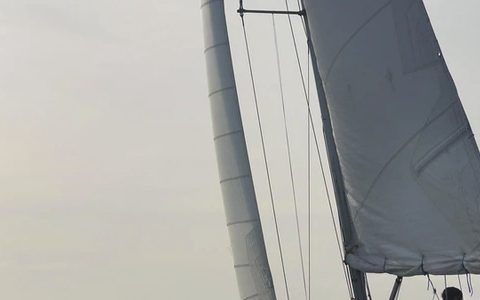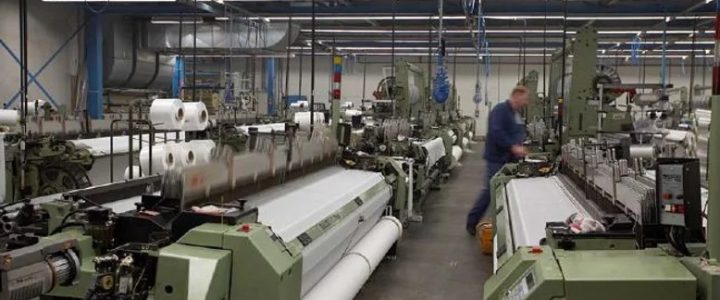To hold the battens firmly in place with minimal weight and clutter at the leech, we use Velcro ‘hookand- loop’ flaps, whose hooks fasten to the loops on the insides of the pockets. The flaps are pushed in with a flat, glass fibre ‘prodder’, which also keeps the hooks and loops apart. Then, when the ‘prodder’ is withdrawn, the flaps attach themselves along their entire length, making it virtually impossible for the batten to escape by accident.
velcro-fasten batten pockets
